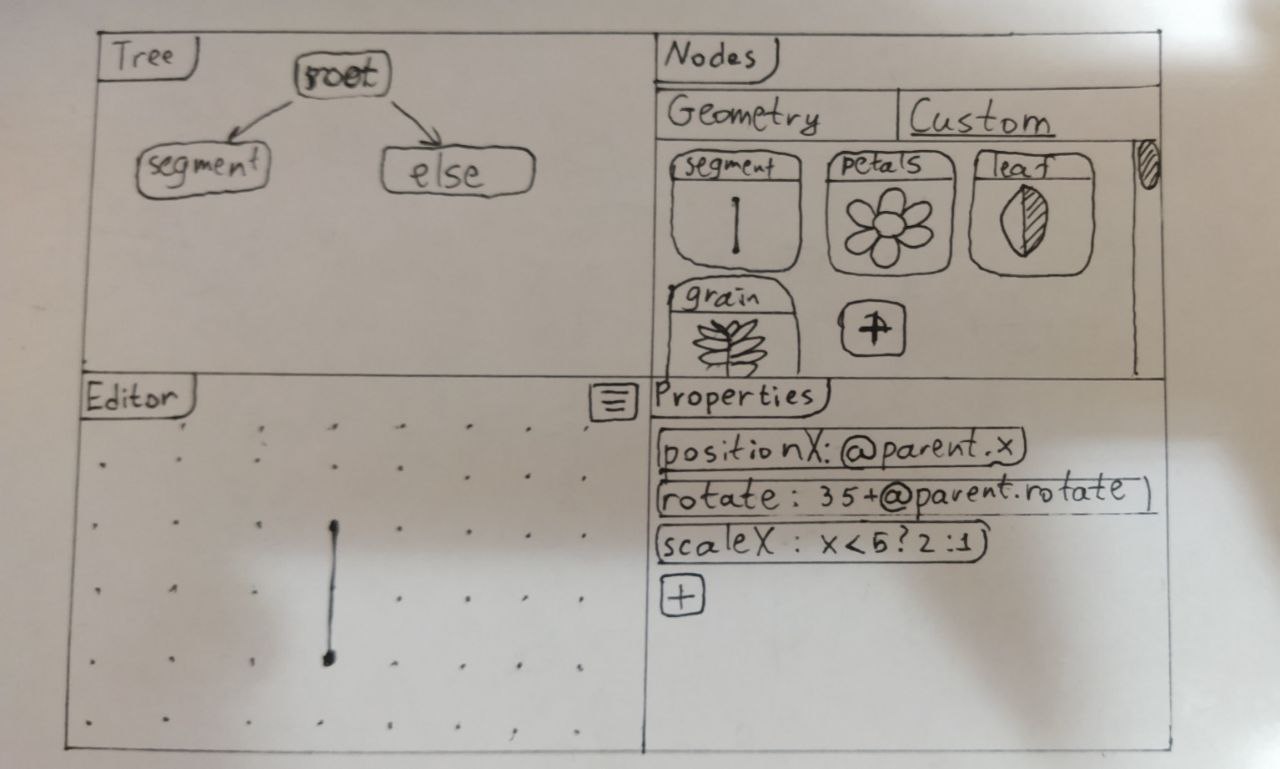
TLDR: I didn’t think about making a library for dynamic instantiation. I should’ve made a library - that is an optimal path.
I liked creating visual generators. But I didn’t like spending 2 weeks to flesh out an idea and to implement unuseful tools like deployment to web or geometry functions.
Looking back, I realise that I wasted much time due to switching between tools: for plant generator I used C# and .NET, for House generator I used Godot and for map generator Kotlin with KorGE (there I spend much time figuring out how to use KorGE and writing my own geometry function) .
I needed a tool to create generators. And I started thinking about it. On this stage, there was no intention on creating a language, all the more so, I was unqualified at that time. I unofficially called this tool the “generator of generators”.
I had these project specifications (from most to least priority):
Geometry primitives:
Three types of containers:
